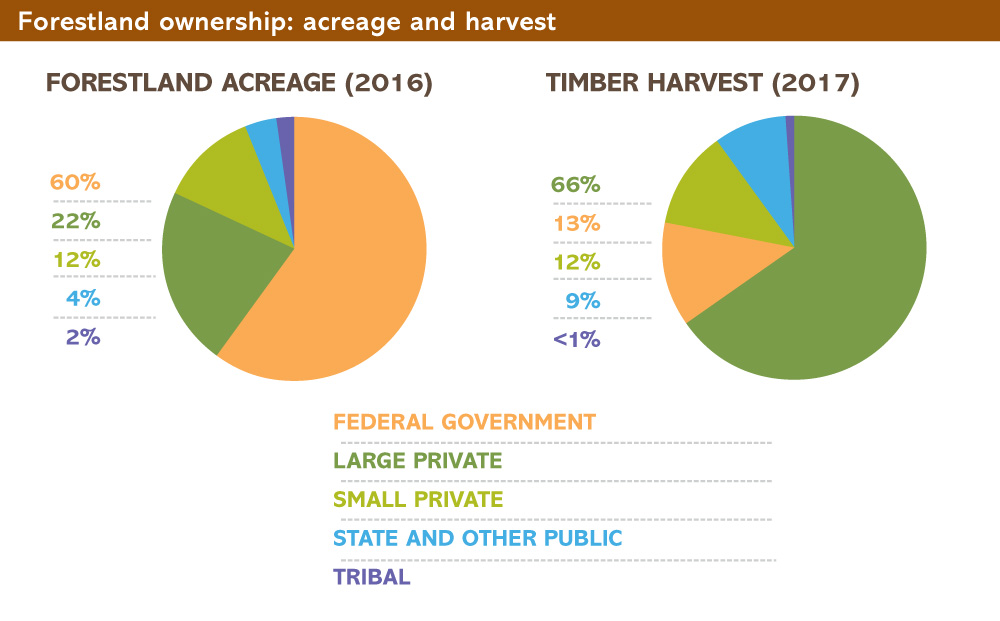
Introduction

Nearly half of Oregon is covered in forests, making it one of the most forested states in the country. Among the many benefits of this vast natural resource is supplying the raw material for local mills to make wood and paper products.
The 2019 Forest Sector Report quantifies how significant forests are to Oregon’s economy. It examines the continued importance of the forest sector, the part of the state economy derived from forests. The report reveals the sector not only remains a source of jobs for tens of thousands of Oregonians but also makes up nearly 4 percent of the state gross domestic product.
That doesn’t mean the forest sector is not without its challenges. The number of mills in Oregon has decreased by about half over the last three decades. Our forests themselves also increasingly face a range of threats to their health and productivity, such as wildfires, insect outbreaks and tree diseases.
Still, there’s reason to be optimistic. Despite having fewer mills, Oregon’s annual lumber production has increased. The state continues to be the top U.S. producer of both softwood lumber and plywood. Demand for wood building products both for housing and commercial construction is rising. Oregon has also become a national leader in manufacturing innovative “mass timber” engineered wood products such as cross-laminated timber (CLT) and mass plywood panels (MPP).
Facts about Oregon’s forests and forest sector
- The total amount of public and private forestland in Oregon has held steady for more than 60 years, at about 30 million acres. In fact, it’s estimated to have been about 30 million acres in the 1600s, as well.
- Oregon’s forestland represents nearly 4 percent of the total U.S. forestland. This makes Oregon the fourth most forested state in the U.S., after Alaska, Texas and California.
- Forestland accounts for about 47 percent of Oregon’s land base. It comprises nearly 80 percent of the total land area in western Oregon, while about 34 percent of the eastern Oregon land base is classified as forestland.
- About 80 percent of Oregon’s forestland is classified as “timberland.” Timberland is forestland that can productively grow commercial-grade timber.
- In the three most recent years for which data is available (2015-2017), Oregon timber harvest remained steady at around 3.8 billion board feet per year.
- Oregon is the top state in the U.S. for softwood lumber production, ahead of Washington, Georgia and Arkansas. It also beats out Louisiana, Mississippi and Texas as the nation’s number-one producer of softwood plywood.
Ownership vs Harvest
While the federal government manages about 60 percent of the forestland in Oregon, only about 13 percent of Oregon’s timber harvest happens on federal land. About 78 percent of the total state harvest comes from private timberlands, which account for 34 percent of Oregon’s forestland.

